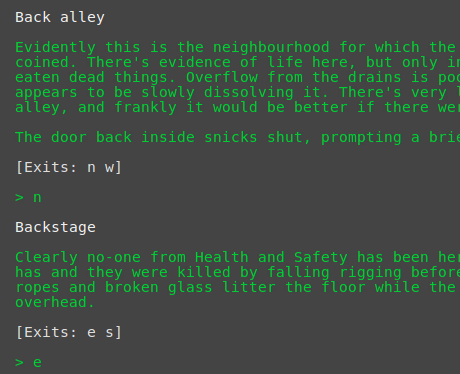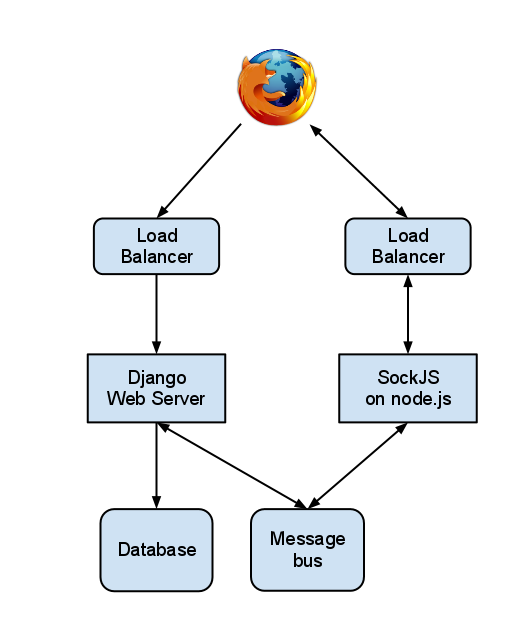Ponies, Dragons and Socks
We were wondering how to present SockJS and its possibilities to a wider audience. Having a working demo is worth much more than explaining dry theory, but what can you present if you are just a boring technologist, with no design skills whatsoever?
With questions like that it's always good to open a history book and review previous generation of computer geeks with no artistic skills. What were they doing? On consoles with green letters they were playing geeky computer games, MUDs (Multi User Dungeons) were especially popular.
Hey, we can do that!

So here it is, a rough and dirty, hacked together in an afternoon MUD! But it aint a normal MUD, it's a unique one:
- The world isn't exactly large, with five locations and 6 commands in total.
- But it's an in-browser game, using SockJS underneath.
- It's built using Django, and the state is handled using Django ORM.
So, forget the 21st century and dive into an ancient world of dragons, at least for a few minutes:
If you're interested in technology feel free to take a look at the sources. Also, as the project is using Django ORM you can add new locations using Django Admin (user: guest, pass: guest). Unleash your creativity! Unfortunately there isn't a simple way of restricting Django Admin users, so you can't see what you added. You may also want to take a look at the initial database fixture.
Here's a diagram illustrating the architecture of this demo:

As you can see it's quite simple, and it follows one of the recommended SockJS deployment models. It should be possible to scale it horizontally, although this game is only a toy and we haven't really tested that.